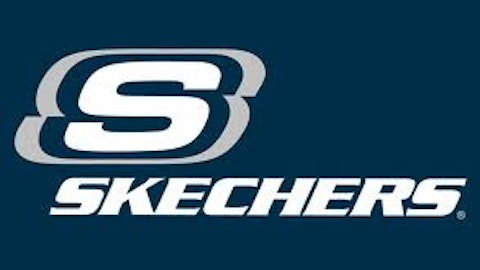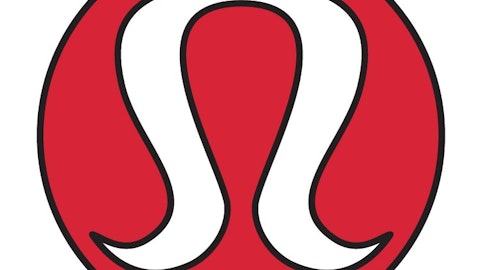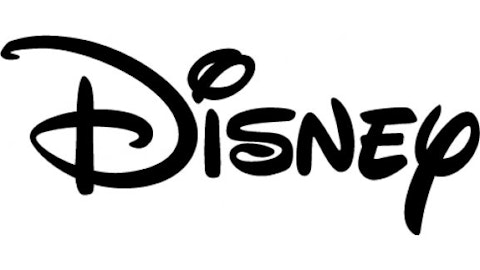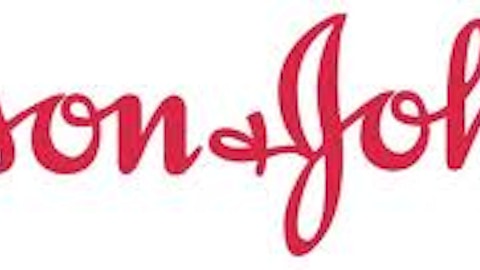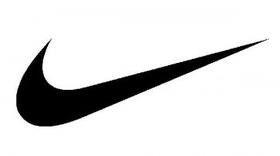
NIKE, Inc. (NYSE:NKE)’s competency in higher-end performance footwear and apparel is unmatched in the industry. The firm’s tremendous marketing resources, coupled with endorsements from some of the most widely recognized athletes on the planet, help to add instant credibility to Nike’s new product innovations.
Nike posts solid finish to fiscal 2013
NIKE, Inc. (NYSE:NKE)’s May-ending fourth quarter showed solid progress, as brand strength continued in the Americas despite a tough comparison. Gross margins continued to leverage as ongoing price increases are now holding against falling input costs, which had been rising for several years.
In the quarter, revenue grew 7%, or 8% excluding currency headwinds. Future orders were also up 8%, all inline with the high single-digit long-term growth rate targeted by the company and my own cash flow model. Nike brand strength continued in the Americas, with revenue gaining 12% in the quarter, only slightly below the 14% posted in the full fiscal year. Despite weak economic conditions in Europe, revenue fell only 1% in the quarter, but was actually up 5% currency neutral for the fiscal year. NIKE, Inc. (NYSE:NKE)footwear sales were up 8% currency neutral, while apparel and footwear saw double-digit declines.
Income and earnings growth for the quarter came in at more than triple the revenue growth rate, as gross margins gained 110 basis points to 43.9%, selling, general, and administrative expenses as a percentage of revenue fell 20 basis points to 30.2%, and the tax rate declined 110 basis points to just 22.8% partly because of some foreign tax reserve reversals.
Nike’s challenging Adidas in soccer apparel
NIKE, Inc. (NYSE:NKE)’s sale of Umbro now firmly places the flagship swoosh brand on a equal footing with rival adidas AG (ADR) (NASDAQOTH:ADDYY) in football (soccer), particularly after taking over sponsorship of key teams such as England. With the addition of the French and Brazilian national soccer team, the company will continue challenging Adidas in global soccer apparel and footwear sales.
Sales in the quarter declined 2% to EUR 3.7 billion, but were flat on a currency-neutral basis. Offsetting the sales decline was a better-than-expected 240-basis-point improvement in gross margin to 50.1%, only the second quarter in adidas AG (ADR) (OTCMKTS:ADDYY)’ history that gross margins reached over 50%. Sourcing and input costs declines continue to be a tailwind, while strategic price increases and retail mix growth also continue to drive gross margins.
Although sport is a long-term growth industry globally, as leisure time increases, there can be no assurance that leisure will follow similar patterns around the world, as economies mature. Fashion risk is also less present in sporting goods than in other apparel and footwear business; however, Adidas, Reebok, and the industry in general, have become more and more fashion driven over the last few decades. As adidas AG (ADR) (OTCMKTS:ADDYY) grows fashion and apparel businesses, results may become more volatile and harder to manage.
Vf Corp (NYSE:VFC)’s aggressive brand-acquiring strategy
Another emerging competitor Nike is facing is VF Corp (NYSE:VFC) . Faced with limited growth prospects in the U.S. 10 years ago, VF Corp (NYSE:VFC). began acquiring brands, and has effectively transformed from a mature jeans, lingerie, and uniform manufacturer into a global provider of active apparel brands.
The firm developed a solid track record, and added nearly $5 billion in revenue to its lifestyle collection over the years through acquisitions of brands like Nautica, The North Face, Vans, and Seven For All Mankind.
